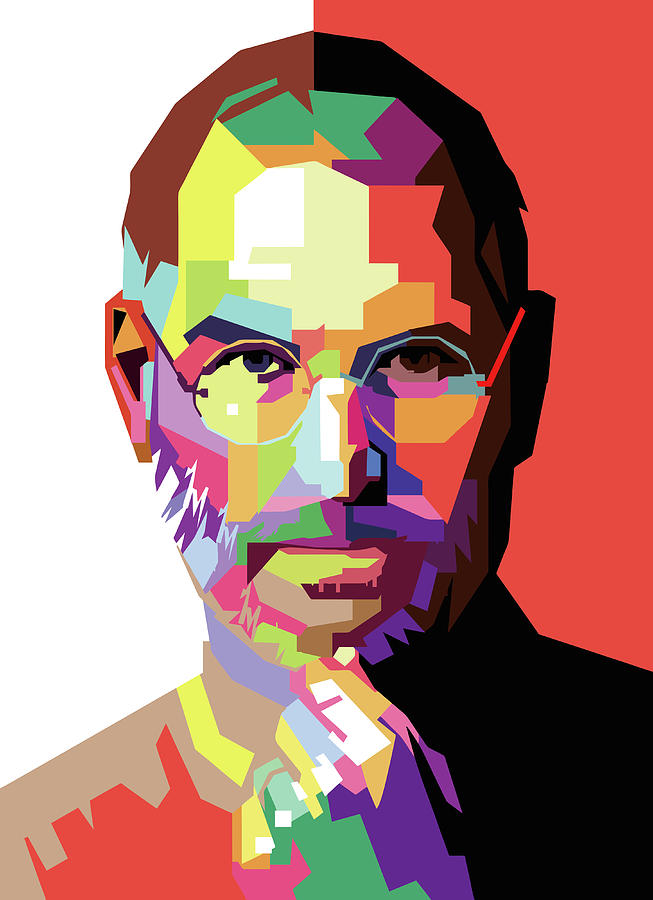1955
Stephen Paul Jobs was born on Feb. 24.

Steven Paul "Steve" Jobs was an American information technology entrepreneur and an Inventor. As Co-founder and CEO of Apple Computers, Steve brought us the first personal computer, the ipod and the iphone.
Here's to the crazy ones. The misfits. The rebels. The troublemakers. The round pegs in the square holes. The ones who see things differently. They're not fond of rules. And they have no respect for the status quo. You can quote them, disagree with them, glorify or vilify them. About the only thing you can't do is ignore them. Because they change things. They push the human race forward. And while some may see them as the crazy ones, we see genius. Because the people who are crazy enough to think they can change the world, are the ones who do.
Stephen Paul Jobs was born on Feb. 24.
Jobs enrolls at Reed College in Portland, Oregon, but drops out after a semester.
Apple Computer was formed on April Fool's Day, later Wozniak and Jobs created a new computer circuit board in garage. The Apple I computer goes on sale by the summer for $666.66.
Apple is incorporated by its founders and a group of venture capitalists. It unveils Apple II, the first personal computer to generate color graphics. Revenue reaches $1 million.
Jobs visits Xerox Palo Alto Research Center, or PARC, and was inspired by a computer with a graphical user interface.
Apple goes public, raising $110 million in one of the biggest initial public offerings to date.
Annual revenue climbs to $1 billion.
The Lisa computer goes on sale with much fanfare, only to be pulled two years later. Jobs lures John Sculley away from Pepsico Inc. to serve as Apple's CEO.
Iconic "1984" Macintosh commercial directed by Ridley Scott airs during the Super Bowl. Presents the 128k Macintosh Computer
Jobs and Sculley clash, Fired from his own company. Wozniak also resigns from Apple this year.
Jobs starts Next Inc., a new computer company making high-end machines for universities. He also buys Pixar from "Star Wars" creator George Lucas for $10 million.
First NeXT computer goes on sale with a $6,500 price tag.
Apple and IBM Corp. announce an alliance to develop new PC microprocessors and software. Apple unveils portable Macs called PowerBook.
Apple introduces the Newton, a hand-held, pen-based computer. The company reports quarterly loss of $188 million in July. Sculley is replaced as CEO by Apple president Michael Spindler. Apple restructures, and Sculley resigns as chairman. At Next, Jobs decides to focus on software instead of whole computers.
Apple introduces Power Macintosh computers based on the PowerPC chip it developed with IBM and Motorola. Apple decides to license its operating software and allow other companies to "clone" the Mac, adopting the model championed by Microsoft Corp. Apple.
The first Mac clones go on sale. Microsoft releases Windows 95, which is easier to use than previous versions and is more like the Mac system. Apple struggles with competition, parts shortages and mistakes predicting customer demand. Pixar's "Toy Story," the first commercial computer-animated feature, hits theaters. Pixar goes to Wall Street, raises $140 million.
Apple announces plans to buy Next for $430 million for the operating system Jobs' team developed. Jobs is appointed an adviser to Apple. Gil Amelio replaces Spindler as CEO.
Jobs returns as "interim" CEO after Amelio is pushed out. He foreshadows the marketing hook for a new product line by calling himself "iCEO." Jobs puts an end to Mac clones.
Apple returns to profitability. It shakes up personal computer industry in 1998 with the candy-colored, all-in-one iMac desktop, the original models shaped like a futuristic TV. Apple discontinues the Newton.
Apple removes "interim" label. Steve Jobs becomes Apple's CEO.
The first iPod goes on sale, as do computers with OS X, the modern Mac operating system based on Next software. Apple also releases iTunes software.
Apple launches the iTunes Music Store with 200,000 songs at 99 cents each, giving people a convenient way to buy music legally online. It sells 1 million songs in the first week.
Jobs undergoes surgery for a rare but curable form of pancreatic cancer. Apple discloses his illness after the fact.
Apple expands the iPod line with the tiny Nano and an iPod that can play video. The company also announces that future Macs will use Intel chips.
Disney buys Pixar for $7.4 billion. Jobs becomes Disney's largest individual shareholder.
Apple releases its first smartphone, the iPhone. Crowds camp overnight at stores to be one of the first to own the new device.
Jobs explains severe weight loss by saying he has a treatable hormone imbalance and that he will continue to run Apple. Days later he backtracks and announces he will be on medical leave. He returns to work in June. Later it is learned that he received a liver transplant.
Apple sells 15 million of its newest gadget, The iPad, in nine months, giving rise to a new category of modern touch-screen tablet computers.
Jobs explains severe weight loss by saying he has a treatable hormone imbalance and that he will continue to run Apple. Days later he backtracks and announces he will be on medical leave. He returns to work in June. Later it is learned that he received a liver transplant.
In a memo to Apple employees, Jobs announces a second medical leave with no set duration. Cook again steps in to run day-to-day operations. Jobs retains CEO title and remains involved in major decisions.
Apple announces that Jobs is resigning as CEO. Cook takes the CEO title, and Apple names Jobs chairman.
Jobs dies at 56. Apple announces his death without giving a specific cause.